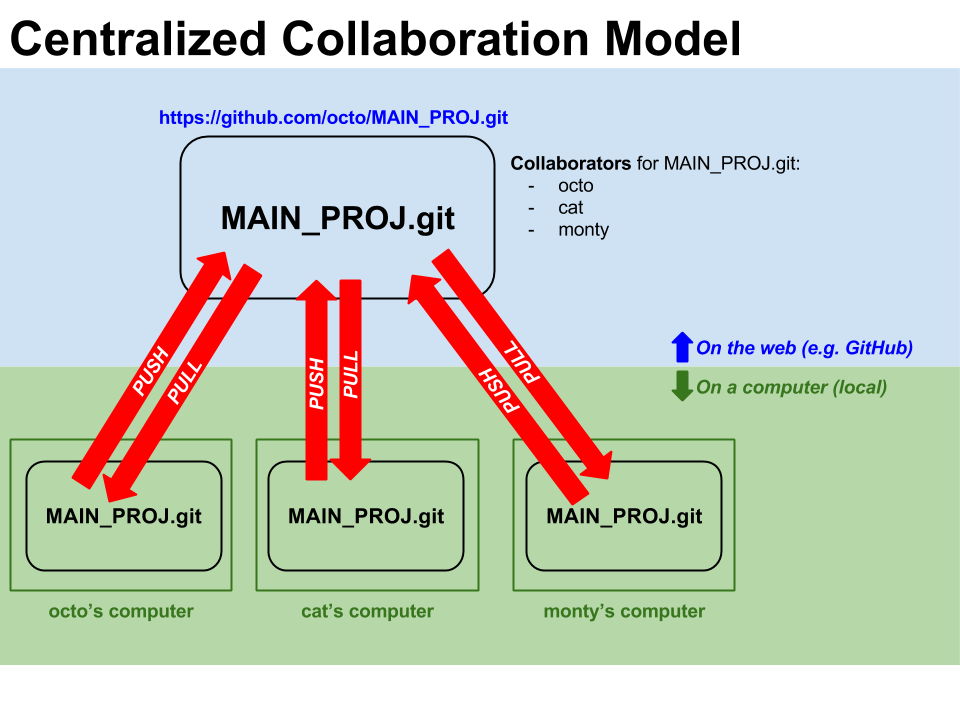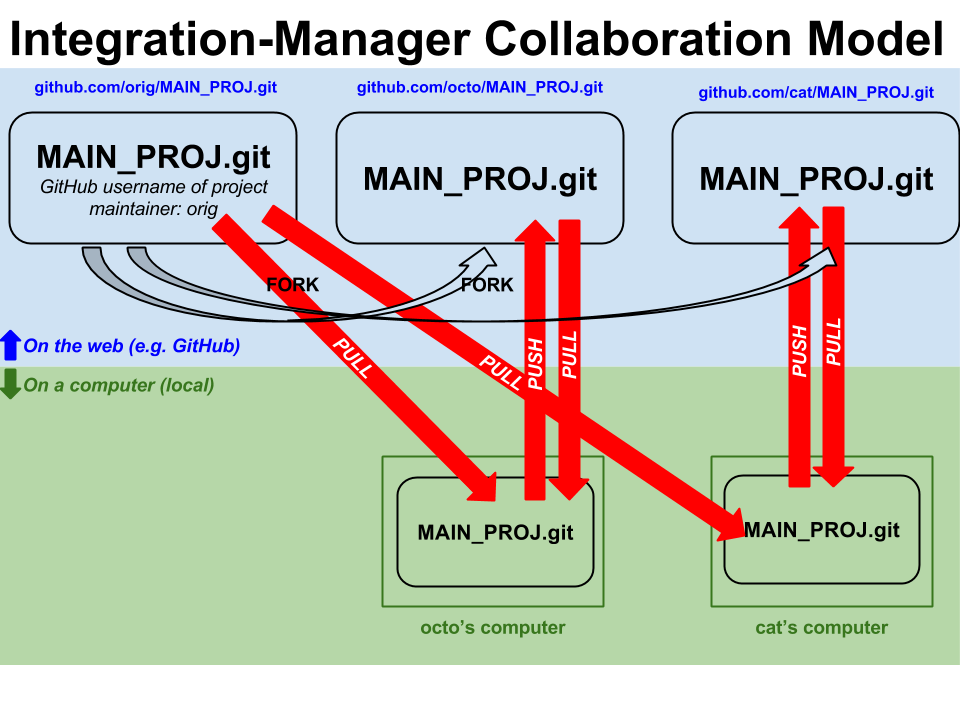Lab 3¶
Lesson Plan - Stats 159/259 - Lab 3 - 9/21/15
Agenda¶
- Working with git remotes
- A couple python notes
- modules & __name__
- High-level vs. low-level - what does this mean and how does it work?
- Working on HW 1
- Before class on Tuesday: NumPy Lock ‘n Load.
Working with (git) Remotes¶
What are the two ways to set up a project to work on in git?
git clone is like an git init + git pull + git remote add
Git workflows: forking, cloning, push/pull permissions with remotes.
Centralized model Often used for small (potentially private) projects where all the collaborators know each other. A single central repo is used as the “main” repo and every collaborator has read/write (i.e. pull/push) access to the main repo.

A simple cartoon of the centralized collaboration model. For more information, see the ProGit book section 5.1.
Integration-manager model This collaboration model takes full advantage of the distributed nature of git. It is a very common model for contributing to open-source projects ranging in size from very small (100’s of lines) to very large (10’s of thousands of lines). In this model, everyone has read (pull) access to the main project repository, but only a few people (called integration-managers, or sometimes lieutenants) have write (push)access. Any (potential) collaborator may pull down a local copy of the project and contribute locally. They can also fork to create their own remote copy of the repository that they can push to. However, to get your contributions into the “main” (or “blessed”) repository, you have to request that one of the integration managers pull your changes into the blessed repo. This is where the concept of a pull request comes from.

A simple cartoon of the integration-manager collaboration model. For more information, see the ProGit book section 5.1.
Python Pontification¶
Reading 3 stressed python’s “high-level syntax with low-level capability”. Many of you latched on to this concept, but it seems there may have been some confusion as to what this means. To start, let’s take a look at what python actually is by looking at its source code.
Don’t worry! You aren’t expected to understand the source or know anything about it. However, looking at it should emphasize a couple things:
- An example (in all it’s gory detail) of what it means to be “open source”
- More importantly, this is in large part how python gives programmers access to “low-level capabilities” - The interpreter itself is written in a “low-level” language: C! This is also contributes to python’s description as a “glue language” - it is possible for developers to use various tools (e.g. cython, SWIG, ctypes, other API’s) to build wrappers around or bridges to code that was written in other languages.
Quick demo on scope: what is __name__?
- Python objects’ special attributes: dunders
